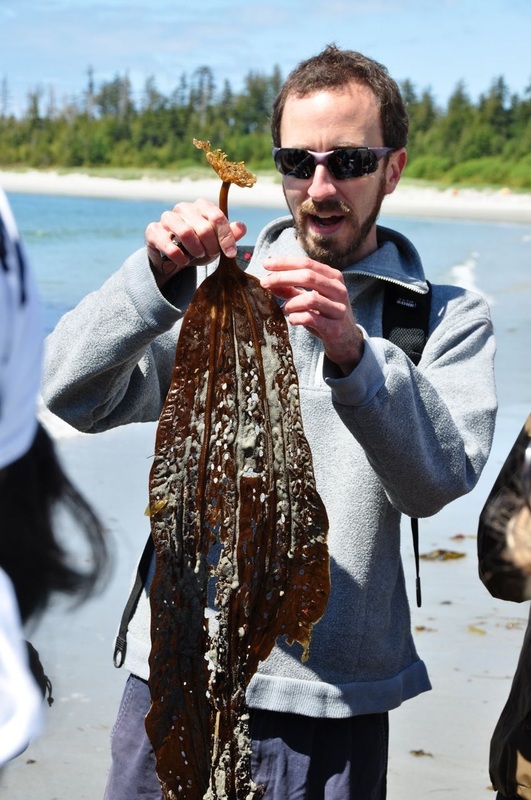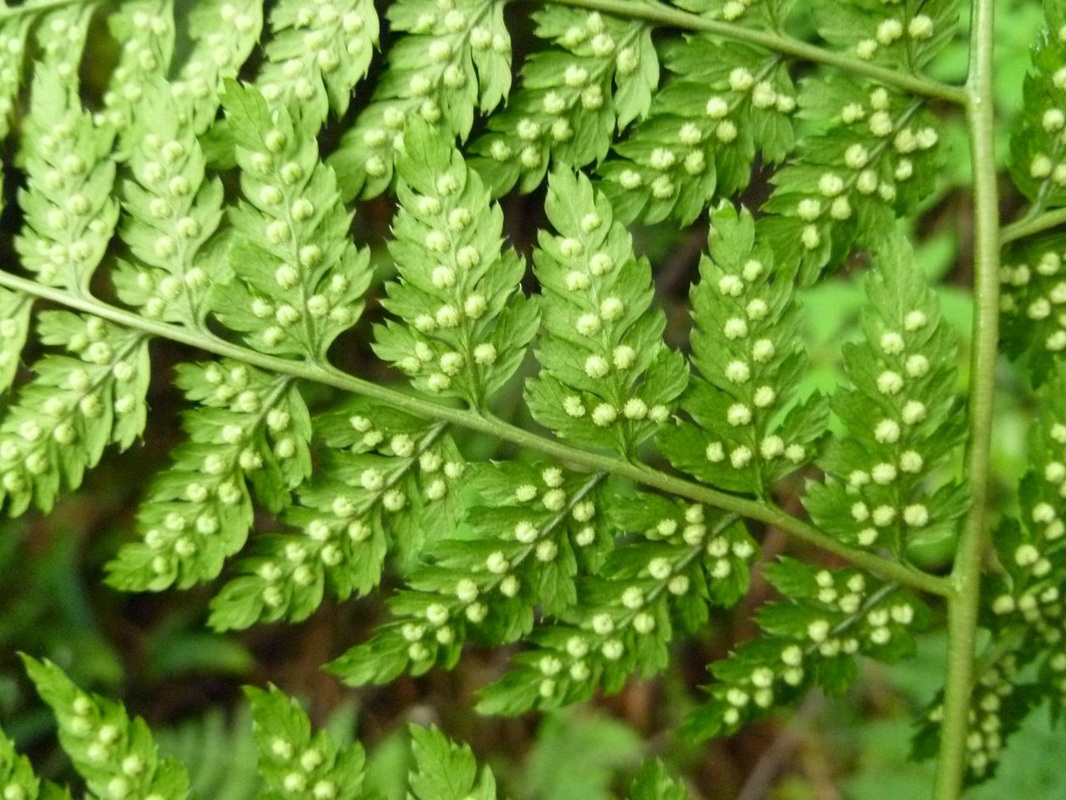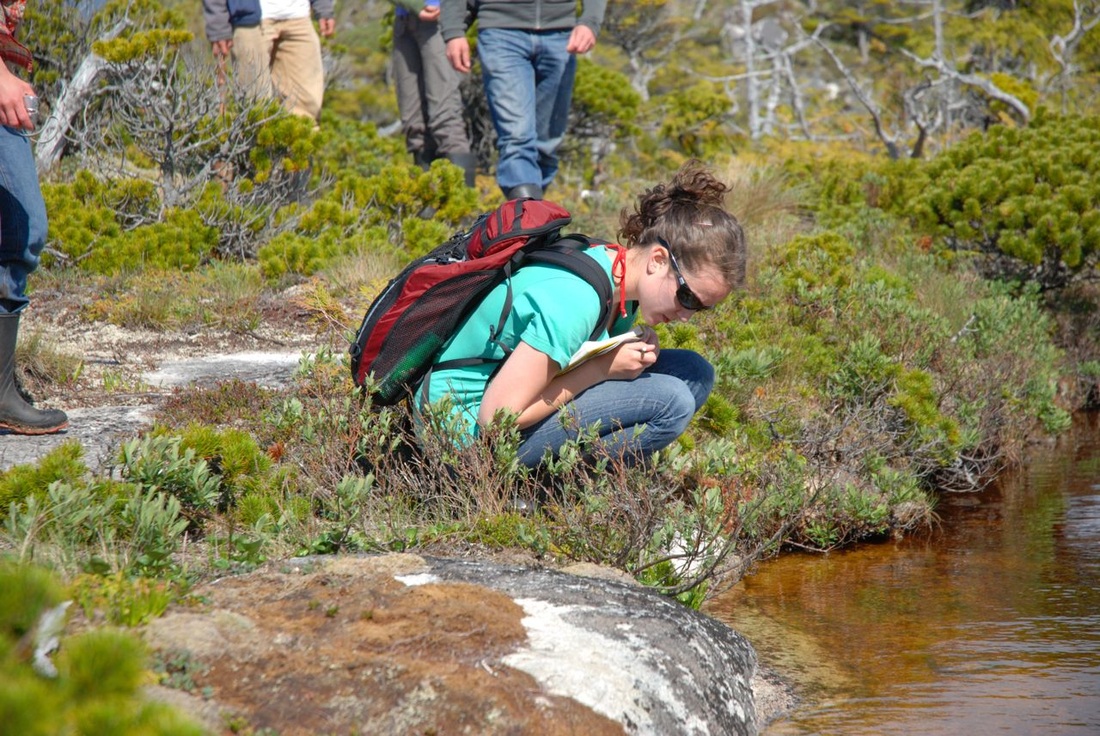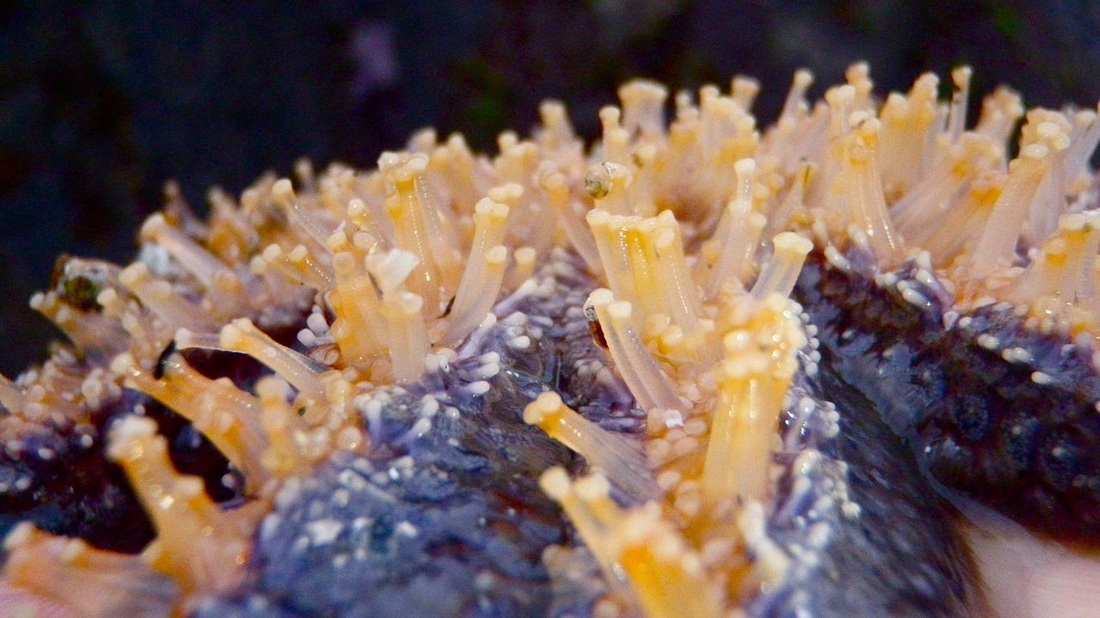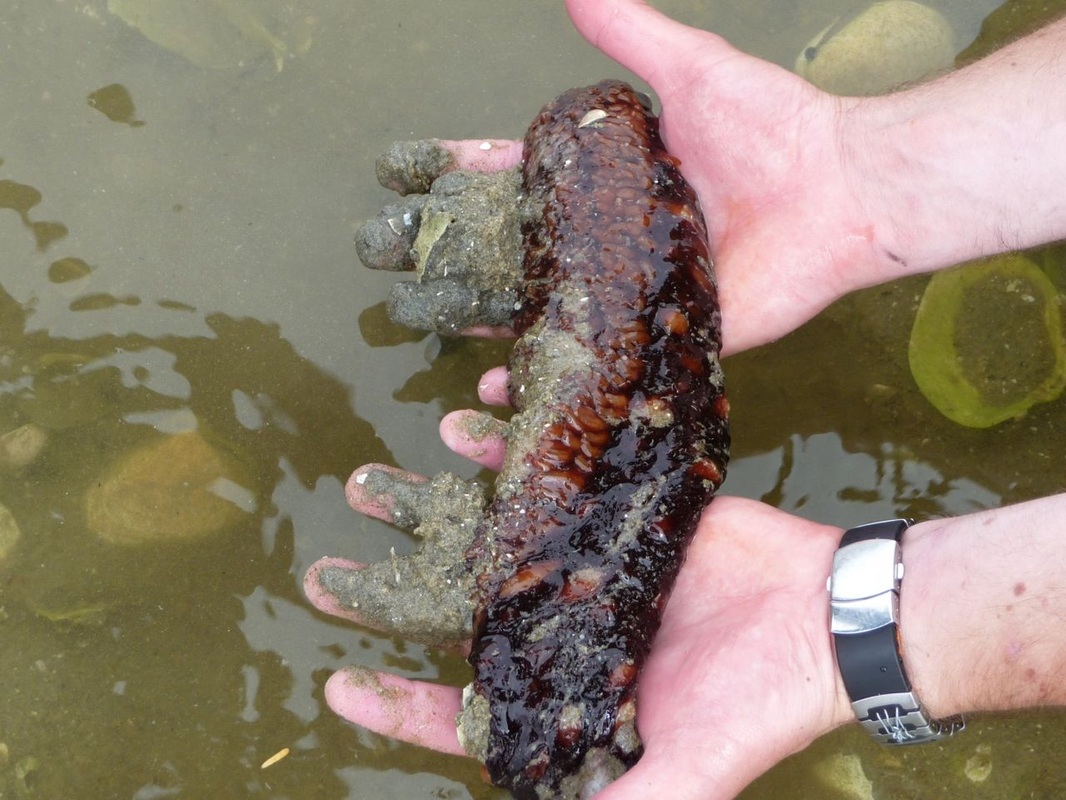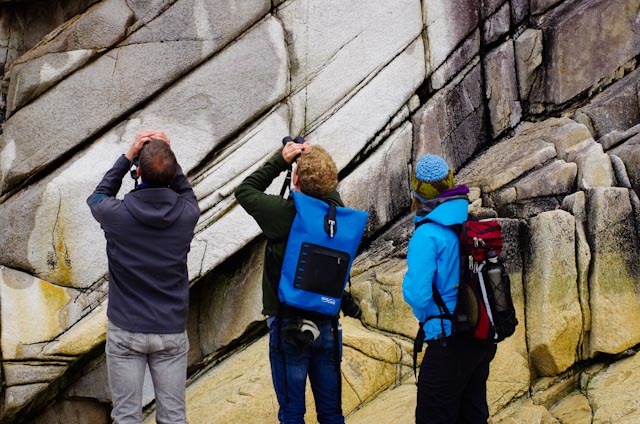Identification Resources
Below you will find external links to references containing general information, terminology, diagrams, and keys.
Biodiversity information and general species identification assistance
• Biodiversity of BC - UBC Geography
• BC Species and Ecosystems Explorer - Ministry of Environment
• Encyclopedia of Life
• Global Invasive Species Database
Animals
• The Cornell Lab of Ornithology Bird Guide
• Audubon Birds
• The Monterey Bay Aquarium Animal Guide
• E-Fauna BC: Electronic Atlas of the Wildlife of British Columbia
• E-Fauna BC Species Checklist
• Vancouver Aquarium AquaFacts
• BC Frogwatch Program
• Amphibian Ark
Plants, Fungi, Lichens, and Algae
• E-Flora BC: Electronic Atlas of the Flora of British Columbia
• USDA Plant Database
• American Fern Society
• Lichens of British Columbia Illustrated Keys by Trevor Goward, Ministry of Forests
• UBC Botanical Garden Botany Photo of the Day
• Learning Oaks - Species A Day: While Biodiversity of the Central Coast will cover many species found outside of the Central Coast region, including Vancouver Island, this is an example of a similar and excellent resource for southern Vancouver Island terrestrial species.
Marine Species
• Wild Whales BC Cetacean Sightings Network
• Marine Species Identification Portal
• Rosario Beach Marine Laboratory: Invertebrates of the Salish Sea
• Race Rocks Ecological Reserve
• FishBase (searchable by a variety of factors, including scientific or common name, country, and ecosystem)
• Sea Stars of the Pacific Northwest
• World Register of Marine Species
• Sea Slug Forum (nudibranchs, bubble-shells, sea hares, and other sea slugs)
• UCMP Gastropoda
• Oregon Coast Aquarium
• JellyWatch (records sightings of jellies and other marine organisms) and JelliesZone (Eastern Pacific Ocean)
Species at Risk
• Biodiversity of BC
• BC Red List Species
• BC Red and Blue List Species
• Species listed by COSEWIC (Committee on the Status of Endangered Wildlife in Canada)
• IUCN (International Union on the Conservation of Nature) Red List of Threatened Species
More Biodiversity Databases are linked on the Biodiversity of BC UBC Geography website
• Biodiversity of BC - UBC Geography
• BC Species and Ecosystems Explorer - Ministry of Environment
• Encyclopedia of Life
• Global Invasive Species Database
Animals
• The Cornell Lab of Ornithology Bird Guide
• Audubon Birds
• The Monterey Bay Aquarium Animal Guide
• E-Fauna BC: Electronic Atlas of the Wildlife of British Columbia
• E-Fauna BC Species Checklist
• Vancouver Aquarium AquaFacts
• BC Frogwatch Program
• Amphibian Ark
Plants, Fungi, Lichens, and Algae
• E-Flora BC: Electronic Atlas of the Flora of British Columbia
• USDA Plant Database
• American Fern Society
• Lichens of British Columbia Illustrated Keys by Trevor Goward, Ministry of Forests
• UBC Botanical Garden Botany Photo of the Day
• Learning Oaks - Species A Day: While Biodiversity of the Central Coast will cover many species found outside of the Central Coast region, including Vancouver Island, this is an example of a similar and excellent resource for southern Vancouver Island terrestrial species.
Marine Species
• Wild Whales BC Cetacean Sightings Network
• Marine Species Identification Portal
• Rosario Beach Marine Laboratory: Invertebrates of the Salish Sea
• Race Rocks Ecological Reserve
• FishBase (searchable by a variety of factors, including scientific or common name, country, and ecosystem)
• Sea Stars of the Pacific Northwest
• World Register of Marine Species
• Sea Slug Forum (nudibranchs, bubble-shells, sea hares, and other sea slugs)
• UCMP Gastropoda
• Oregon Coast Aquarium
• JellyWatch (records sightings of jellies and other marine organisms) and JelliesZone (Eastern Pacific Ocean)
Species at Risk
• Biodiversity of BC
• BC Red List Species
• BC Red and Blue List Species
• Species listed by COSEWIC (Committee on the Status of Endangered Wildlife in Canada)
• IUCN (International Union on the Conservation of Nature) Red List of Threatened Species
More Biodiversity Databases are linked on the Biodiversity of BC UBC Geography website
|
Northern abalone shell. Photo by ES 470 participant.
|
Terminology
Botany (vascular and non-vascular plants, fungi, lichens, and algae)
• E-Flora BC Glossary of Botanical Terms
• UCMP Botany Glossary
• UW Friday Harbor Laboratories Marine Botany Glossary
General Zoology
• UCMP Zoology Glossary
• Harvard University Museum of Comparative Zoology
Marine Species
• Invertebrates of the Salish Sea Illustrated Glossary
• General echinoderm morphology (sea urchins, sand dollars, brittle stars, sea stars, sea cucumbers)
• The Natural History Museum Echinoid Directory (specifically for sea urchins and sand dollars)
• FishBase Glossary (scroll down to Glossary)
• Sea Slug Forum: body shape, anatomy, and body parts (nudibranchs, bubble-shells, sea hares, and other sea slugs)
Botany (vascular and non-vascular plants, fungi, lichens, and algae)
• E-Flora BC Glossary of Botanical Terms
• UCMP Botany Glossary
• UW Friday Harbor Laboratories Marine Botany Glossary
General Zoology
• UCMP Zoology Glossary
• Harvard University Museum of Comparative Zoology
Marine Species
• Invertebrates of the Salish Sea Illustrated Glossary
• General echinoderm morphology (sea urchins, sand dollars, brittle stars, sea stars, sea cucumbers)
• The Natural History Museum Echinoid Directory (specifically for sea urchins and sand dollars)
• FishBase Glossary (scroll down to Glossary)
• Sea Slug Forum: body shape, anatomy, and body parts (nudibranchs, bubble-shells, sea hares, and other sea slugs)
|
Dr. Patrick Martone explains a kelp holdfast. Photo by ES 470 student.
|
The sori of a fern can be important for species identification (these lady fern sori are horseshoe or oblong-shaped). Photo by ES 470 participant.
|
Diagrams
• Echinoid morphology (Natural History Museum Echinoid Directory) - for sea urchins and sand dollars
• Bivalve morphology (Natural History Museum Wales) - for clams, mussels, scallops, and other bivalves
• BIODIDAC (University of Ottawa) - annotated drawings, with links to other phyla
• Echinoid morphology (Natural History Museum Echinoid Directory) - for sea urchins and sand dollars
• Bivalve morphology (Natural History Museum Wales) - for clams, mussels, scallops, and other bivalves
• BIODIDAC (University of Ottawa) - annotated drawings, with links to other phyla
Keys
Instructions: To use a dichotomous key, start at the two choices listed for #1 (these will be 1a and 1b). Pick whichever choice fits the description of your species, and then go to the next number listed beside that choice. Continue in this way until you get to a species, and hopefully it will fit the description of what animal you found! Each number has two choices, and choices in the key are all numbered consecutively, though you will not be directed to each number. Click here to read a more detailed description of dichotomous keys.
Marine Invertebrates of the Salish Sea
The Salish Sea refers to coastal waters off southern BC and northern Washington: Puget Sound, Strait of Georgia, and Juan de Fuca Strait. Many of these animals are found throughout the Pacific Northwest.
• Start HERE if you generally know what type of animal you found (crustacean, anemone, bivalve, sea urchin, sponge, etc.)
• Start HERE if you have no idea whatsoever!
Fish
• Start HERE if you generally know what type of fish you found, or where it was found
• Start HERE for a list of keys, sorted by area, order, and family
Instructions: To use a dichotomous key, start at the two choices listed for #1 (these will be 1a and 1b). Pick whichever choice fits the description of your species, and then go to the next number listed beside that choice. Continue in this way until you get to a species, and hopefully it will fit the description of what animal you found! Each number has two choices, and choices in the key are all numbered consecutively, though you will not be directed to each number. Click here to read a more detailed description of dichotomous keys.
Marine Invertebrates of the Salish Sea
The Salish Sea refers to coastal waters off southern BC and northern Washington: Puget Sound, Strait of Georgia, and Juan de Fuca Strait. Many of these animals are found throughout the Pacific Northwest.
• Start HERE if you generally know what type of animal you found (crustacean, anemone, bivalve, sea urchin, sponge, etc.)
• Start HERE if you have no idea whatsoever!
Fish
• Start HERE if you generally know what type of fish you found, or where it was found
• Start HERE for a list of keys, sorted by area, order, and family
|
Giant red sea cucumber (Parastichopus californicus). Photo by ES 470 participant.
|
Photo by ES 470 participants
|


